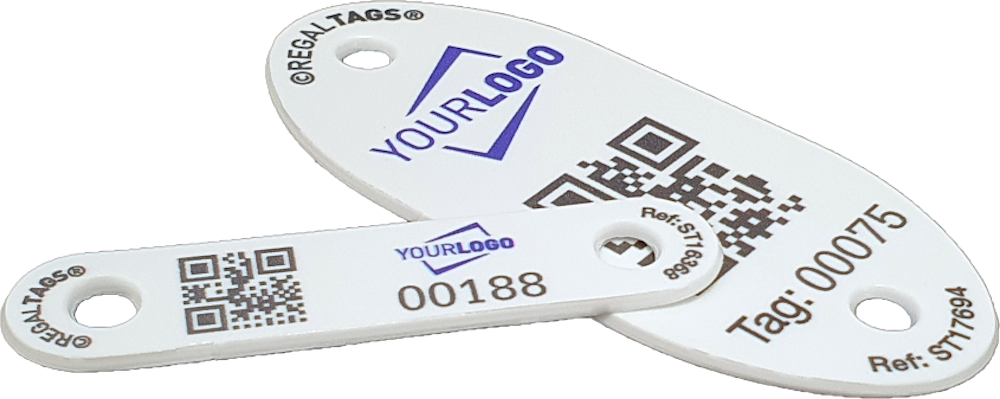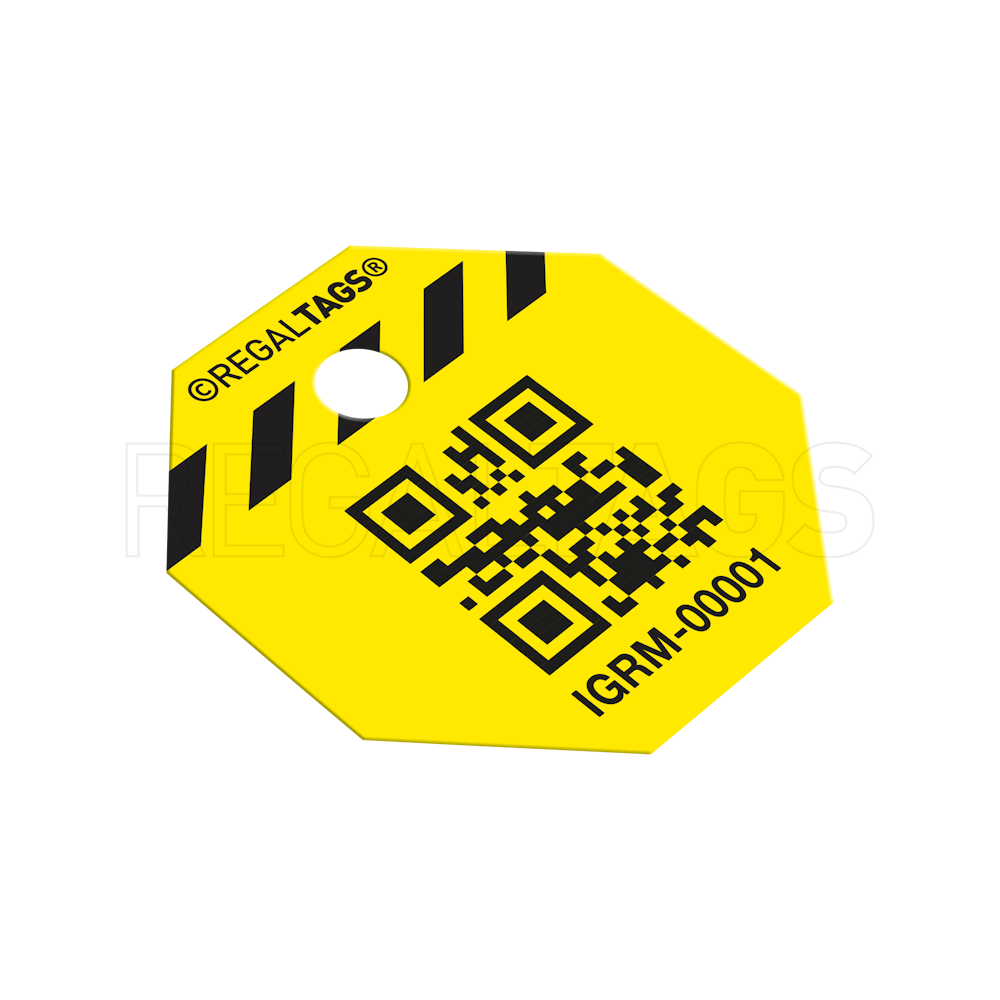Why QR codes are the future of flange management documentation
In high-risk industrial environments, flange documentation is vital, but outdated paper systems slow teams down and increase the chance of errors. QR codes offer a smarter solution, giving instant access to critical data with a quick scan.
In high-stake industrial environments, where safety, efficiency and compliance are all non-negotiable, flange management plays a critical role. Ensuring that every flange connection is properly documented, tracked and maintained can be the difference between smooth operations and costly downtime or safety incidents.
Traditionally, flange documentation has relied heavily on paper-based systems and manual data entry. These are all methods that are time-consuming, error-prone and difficult to scale. But as industries move toward smarter, more connected systems, a new solution is emerging: QR codes.
In this blog, we will explore why QR codes are quickly becoming the future of flange management documentation. From improving traceability and reducing errors to enhancing real-time access to critical data, discover how this simple yet powerful technology is transforming the way teams manage flanges on site.
Why flange management is critical in industrial environments
Flange management is critical in industrial settings because flanged joints are among the most common, and vulnerable, connection points in piping systems. Whether it’s oil and gas, chemical manufacturing or refineries and pipelines, improperly managed flanges can lead to serious issues such as:
- Leaks
- Equipment failure
- Environmental hazards
- Costly unplanned downtime
Every flange must be installed, tightened, inspected and documented with precision. Poor flange control not only compromises the mechanical integrity of a system but also puts worker safety and regulatory compliance at risk. In high-pressure and high-temperature environments, even minor errors in flange installation or tracking can result in catastrophic consequences.
That is why effective flange management, including accurate documentation, proper torquing and traceability, is essential. It ensures reliability, extends equipment lifespan and provides the audit trail needed to meet industry standards and legal requirements.

The limitations of traditional flange documentation methods
Despite the critical nature of flange management, many industrial sites still rely on outdated, manual documentation methods, such as handwritten tags, paper checklists or basic spreadsheets. While these approaches may have worked in the past, they introduce several challenges in modern, high-pressure environments.
Key limitations include:
- Human error: Handwritten records can contain mistakes, inconsistencies or illegible information.
- Lost or damaged documentation: Paper tags and forms are vulnerable to harsh site conditions like moisture, heat or chemicals.
- Lack of real-time visibility: Data is often siloed or delayed, making it difficult for teams to access up-to-date flange records.
- Poor traceability: It can be hard to track the full lifecycle of a flange joint, from installation to flange inspection and maintenance.
- Inefficiency: Manual entry takes time, slows down workflows and increases administrative burden.
- Limited scalability: As operations grow, paper-based systems become increasingly difficult to manage and audit.
These limitations not only impact productivity but can also increase safety risks and make it harder to meet industry regulations. That is why many forward-thinking teams are turning to digital solutions like QR code-based tagging for more effective flange management.
What are QR codes and how can they be used on flange tags?
QR codes are two-dimensional barcodes that store data in a compact, scannable format. Unlike traditional barcodes, QR codes can hold significantly more information and can be read instantly by smartphones, tablets or handheld scanners, even in challenging environments.
When applied to flange tags, QR codes act as digital gateways to critical information. Instead of relying on handwritten notes or manually cross-referencing spreadsheets, workers can scan a QR code to instantly access all relevant flange data on a mobile device or tablet.
QR codes can be used to link or contain:
- Flange identification and location details
- Installation and torquing specifications
- Inspection records and test results
- Maintenance history
- Associated drawings, photos or documents
- Safety notes or permit information
These QR-enabled tags are typically made from durable, industrial-grade materials to withstand harsh site conditions.
By embedding QR codes directly onto each flange tag, teams gain quick, reliable access to accurate and up-to-date documentation. This reduces the reliance on paperwork and ensures vital data is always at hand, right where it’s needed.

Key benefits of using QR codes for flange management
Integrating QR codes into flange tagging and documentation offers a wide range of advantages that directly address the shortcomings of traditional methods. By digitising access to critical flange information, teams can work more efficiently, safely and accurately.
Benefits of using QR codes in flange management include:
- Enhanced traceability: Each QR code links directly to a unique flange record, making it easy to track its full lifecycle.
- Real-time access to critical data: Workers and inspectors can scan a tag to instantly view the most up-to-date documents, drawings, test results or work orders.
- Improved organisation and efficiency: QR code systems reduce the need for paper records and manual data entry, streamlining workflows and cutting down on administrative time.
- Error reduction: Digital documentation helps eliminate common mistakes caused by illegible handwriting, data duplication or lost paperwork.
- Cost-effectiveness: While there may be an initial setup cost, QR code implementation reduces rework, saves time and lowers the long-term cost of managing flange data manually.
- Audit and compliance readiness: Digital records are easier to store, search and share, making it far simpler to demonstrate compliance during audits.
- Seamless integration: QR codes can be linked to existing asset management systems, allowing companies to build on their current processes without starting from scratch.
In short, QR codes modernise flange management, bringing it in line with the connected, data-driven operations that industries demand.
How to successfully implement QR codes in your flange management
Implementing QR codes into your flange management process doesn’t have to be complex, but it does require planning and consistency to get the most value.
Here are some practical tips and best practices:
- Start with a pilot project: Test QR code tagging on a specific system or project to refine your approach before a full-scale rollout.
- Use durable, industrial-grade tags: Ensure your QR code flange tags are made from materials, such as Prism polypropylene, that can withstand the environmental conditions of your site.
- Standardise your data structure: Decide what information each QR code should link to or contain, whether it is work orders, inspection checklists or historical maintenance records.
- Train your team: Provide simple training so technicians and inspectors understand how to scan QR codes, access data and update records in the field.
- Integrate with existing systems: Link your QR code system to your current asset management or flange management software for seamless updates.
- Establish a tagging protocol: Create consistent guidelines for where and how QR tags are applied on flanges to ensure visibility and usability.
With the right tools and processes in place, QR code implementation can transform how your team manages flange integrity and documentation.

Why QR codes are poised to become the industry standard
As industries move toward smarter, data-driven operations, QR codes offer a simple yet powerful upgrade to outdated flange management practices. Their ability to provide real-time access to accurate data, improve traceability and reduce costly errors makes them an ideal solution for high-compliance, high-pressure environments.
With growing digitisation across sectors like oil and gas, energy and chemical processing, QR codes are quickly gaining traction. They bridge the gap between physical equipment and digital records, enabling safer, faster and more compliant operations.
Given their scalability, affordability and ease of use, it is likely only a matter of time before QR code enabled flange tagging becomes the new industry standard.
Discover flange management solutions from REGALTAG
At REGALTAG, we specialise in durable, high visibility tagging solutions built for industrial environments. Our QR code flange tags are designed to handle extreme conditions while giving your team instant access to the data they need, when they need it.
Visit our flange management page to explore our full range of products and see how we can support your transition to smarter, safer and more efficient operations.
Subscribe
Join 18,000+ others receiving our monthly updates. Free Tag insights delivered straight to your inbox.






